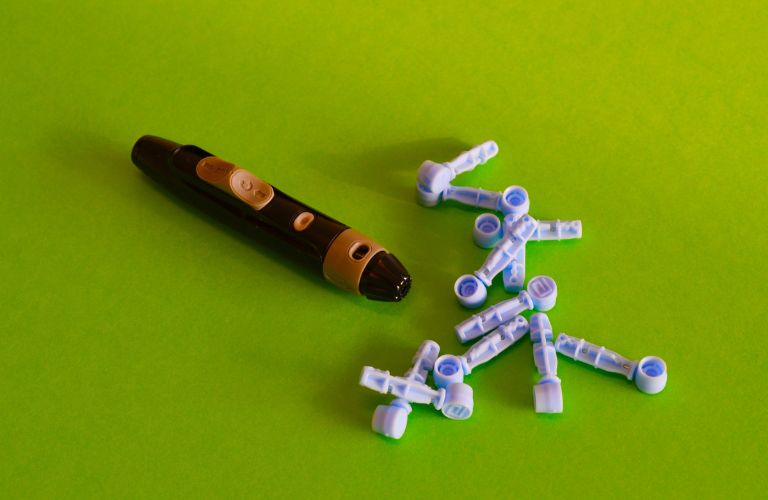Effective Way to Communicate Diabetes to Kids
Parenting a child with diabetes, be it Type 1 or Type 2, brings unique challenges. However, it also opens opportunities for growth and resilience. Explaining diabetes to children requires honesty, empathy, positivity, and patience. It is important to help them understand that their new life routine will include a specified meal plan, regular glucose monitoring with a diabetes device, and possibly insulin shots.
While this may initially be overwhelming, they can adapt and thrive with your support and guidance. Depending on the age, your child may experience various emotions. Together, you can navigate these feelings and find strength in the journey ahead.
Be Honest and Tell Your Children the Truth
The first and most important step in explaining diabetes to children is to be honest. Children deserve to know what diabetes means for them and the new life changes they will have to adopt. Explain that while diabetes isn’t preventable and won’t go away, they can lead a whole and happy life with the right care and management. It is important to make them understand the necessary lifestyle adjustments like following a specified meal plan, monitoring their glucose levels with a diabetes device, and taking insulin shots if required.
Reassure them that these changes are not due to anything they did. It is not their fault. Emphasize that their life is not ending. Instead, they are embracing a new and manageable routine. This honesty will help them understand their condition better and reduce any feelings of guilt, sadness, or blame.

Tell Your Children Their Lives Won’t Be Ruined and Will Remain the Same
Children diagnosed with diabetes often worry that their whole life will change, but there’s plenty of good news! It is important to emphasize the good part while explaining diabetes to children. While they will need to adopt some new habits and precautions, major parts of their life will remain the same. They can still enjoy things like going to school, playing with friends, enjoying sleepovers, and playing the sport they love. The focus will be on managing their blood sugar levels with regular glucose monitoring and sticking to their treatment plan.
By highlighting the stability and continuity in their daily life, you can help control any anxiety or fear they may have about their future. They need to understand that diabetes in kids doesn’t mean giving up their favorite activities—it simply involves learning to manage their health more effectively.
Discuss Diabetes in Simple Language
When explaining diabetes to children, use language that matches their level of understanding. This helps them grasp the concept with ease and feel more comfortable. For younger children, you may say that their body needs a little help to feel its best and that medicine will do just that. For the older ones and teens, a more detailed explanation of insulin and its role in the body can be very enlightening.
Here’s a straightforward and positive way to explain diabetes to children.
A hormone is a special component of your blood. There are different hormones in our body that help it perform different activities. When you have diabetes, you are falling short of an important hormone called Insulin.
We feel energetic and fresh when sugar enters the cells of our body. Without insulin, sugar will remain in your blood and won’t get into your cells that need it for energy. This might make you feel extra hungry, thirsty, or tired because your cells need that sugar to feel energetic and strong.
Now, medicines play the role of a hero. Medicines help insulin enter your cells and get the sugar they need, making you feel energetic and strong. Your medicines ensure you can live a healthy and active life.
In addition to medicines, we should also tweak our diet plan and related routines to help our bodies stay strong and healthy.
This approach makes diabetes more understandable for children, turning a potentially scary topic into something manageable and clear. By demystifying diabetes, we can help children feel empowered and informed.


Discuss Consuming Sweets
A common misconception about diabetes is that it completely bans sweets. The good news is that children with diabetes can still enjoy treats like cakes and chocolate! They just need to be mindful of their sugar intake and fit these treats into their meal plan. Highlight this a lot when explaining diabetes to children. This balanced approach allows them to enjoy their favorite snacks while managing their health. They won’t feel deprived of sweet delicacies and can still have a fun and normal childhood.
Tell Your Children Why They Need Glucose Monitoring Devices
Encourage your children to recognize signs such as increased thirst, frequent urination, fatigue, and irritability. Empower older ones and teenagers to listen to their bodies and communicate any changes or symptoms they notice.
Teach them the importance of using a diabetes device to monitor their glucose levels. Show them how to use it and explain when and how often to check sugar levels. This knowledge helps them actively manage their health, infusing independence and confidence in handling their condition.
Be a Parent Who Enlightens Your Children with the Information They Need to Manage Their Diabetes
Explaining diabetes to children is a delicate process that requires honesty, empathy, and patience. Clear, age-appropriate information and reassurance can help your children understand their condition and feel more in control. Remember to stress that their life will largely remain the same, with a few new routines to manage their health. Helping your child grasp the importance of glucose monitoring and recognizing symptoms will empower them to lead a healthy and fulfilling life despite diabetes.

By addressing these key points, you can effectively explain diabetes to children and support them in adapting to their new lifestyle with confidence and resilience.
[3-min read: What is the Science Behind Mental Stress? How to Handle Stress?]

